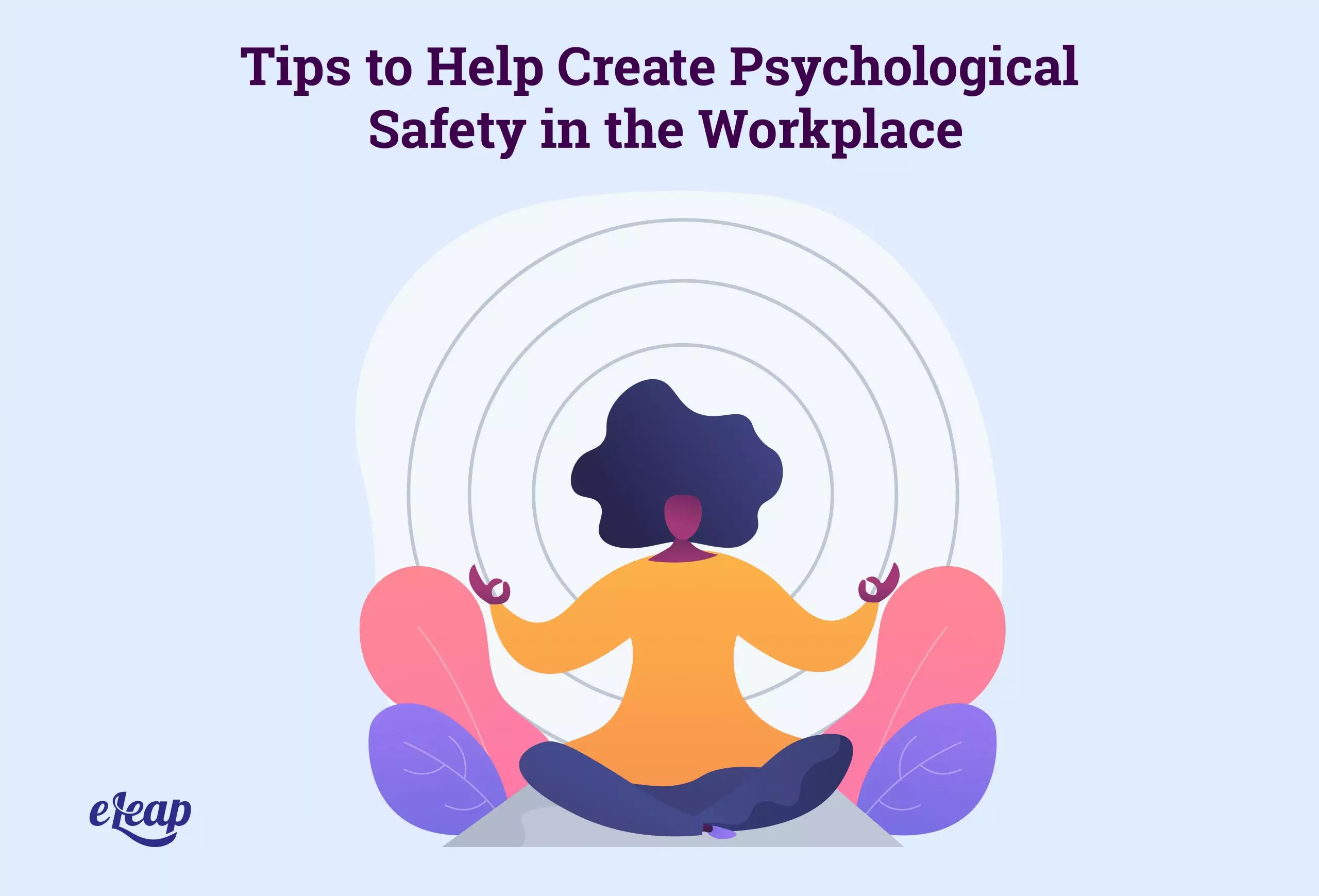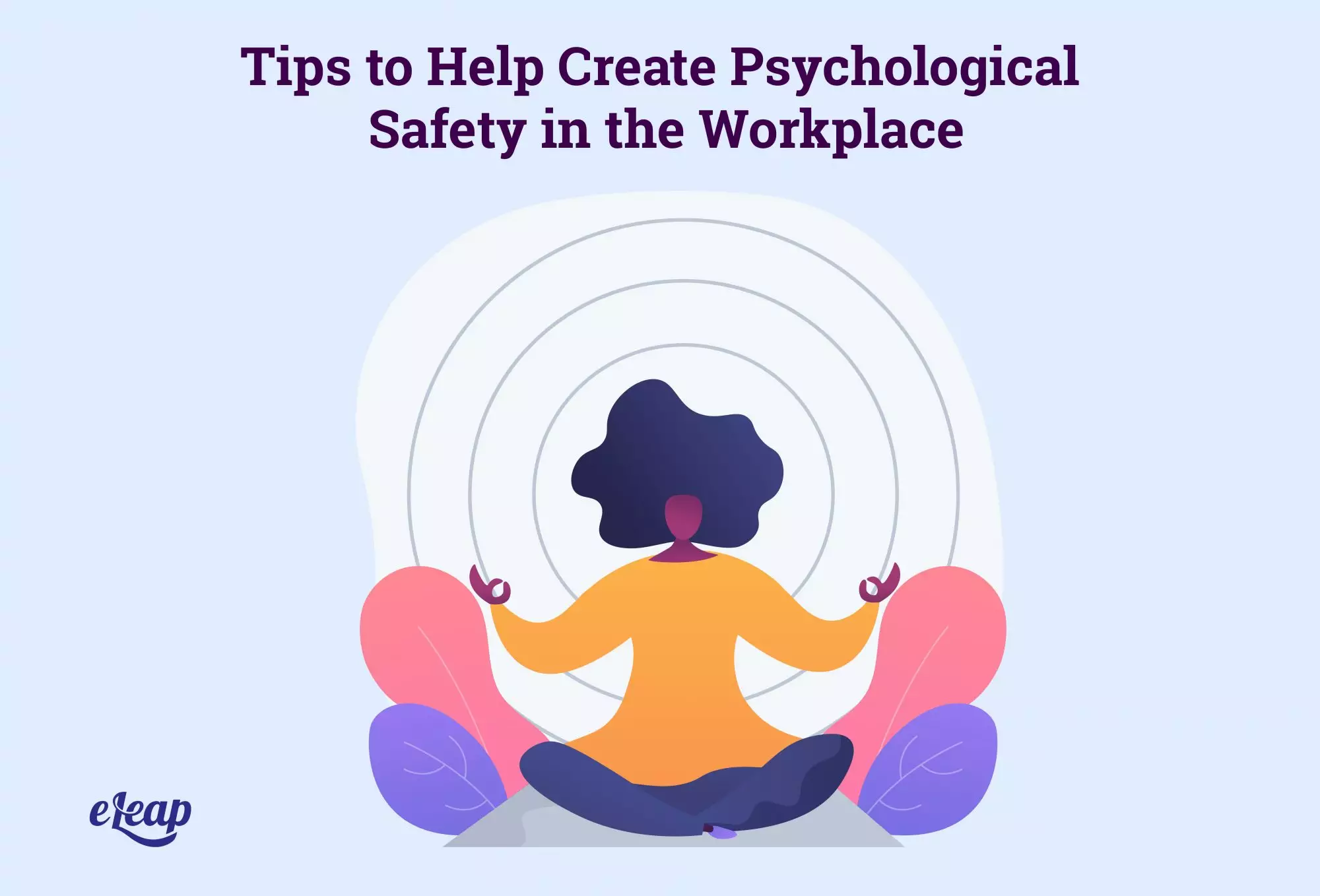Tips to Help Create Psychological Safety in the Workplace

Creating a sense of psychological safety in the workplace is a critical step. Without it, your teams will lack cohesion, your team members will be too afraid of repercussions to take risks on new things, and your employees will not share what they truly think. Of course, creating that sense of psychological safety can be more challenging than you think. This guide will help.

Why Is Psychological Safety Important?
To start, let’s address why psychological safety is important in the first place. For some managers and decision-makers, particularly those who consider themselves “old school”, it’s challenging to understand how a perception of “safety” equates with better business performance or even confidence in taking risks. Doesn’t safety imply not taking chances?
In this case, psychological safety means that your team members are safeguarded against fallout. In the past, if an employee took a chance and started a new project that ultimately failed to yield the intended results, they would be subject to punitive measures, perhaps even losing their job. In a psychologically safe workplace, that’s not the case. It’s about empowering employees to try new things, to innovate, and to grow without fear that a mistake is going to cost them their livelihood.
Isn’t My Workplace Already Psychologically Safe?
You might think that your teams should already feel safe to innovate and take risks, but that doesn’t make it so. Assess your team and answer the following questions to determine if they’re psychologically safe.
- Do your team members feel comfortable asking about things they don’t understand when in a group setting? Or do they try to pretend that they know everything?
If they’re not comfortable asking, then they don’t feel safe doing so. No one knows everything, but if there’s a feeling that they’ll be mocked or reprimanded for not knowing something, they’re certainly not going to ask. That will ultimately cripple your team’s potential.
- Do your team members feel comfortable discussing tough topics in a group setting? Or do they avoid it?
If they’re not comfortable discussing challenging issues, including reservations they may have or their concerns, then they are most certainly not psychologically safe.
- What happens when someone on the team makes a mistake?
If your team’s first action is to distance themselves from the individual who made the mistake, not only are they not psychologically safe, but the likelihood is high that management takes punitive action when mistakes are made, and that your company culture may need to change.
- Are your team members happy to give (and receive) actionable feedback?
If not there’s a very good chance that any feedback is critical without an element of constructiveness to it. Feedback should be supportive, positive, and geared to achieve growth not to tear others down.
- Do team members feel comfortable asking for help or do they “go it alone” so that they don’t have to reach out?
If they’re not comfortable asking for help, it’s a sign of something deeply wrong with your culture and it’s a good indication that the workplace is not psychologically safe.
How to Create a Sense of Psychological Safety
As you can see from the information above, if your team doesn’t feel psychologically safe, achieving success is going to be challenging, perhaps even impossible. The good news is that you can change the situation for the better.
Focus on L&D
One of the most critical parts of creating a sense of psychological safety is to make it a focus of your learning and development efforts. Create (or add) modules that address some of the key considerations in this area, including:
- Asking questions
- The importance of constructive feedback
- The ability to give feedback to managers
- Why and how to ask for help
- How to raise difficult subjects
- How to discuss work matters in a group setting
- How to value everyone’s contribution
- The importance of experimentation and failure for growth and development
These are just a few examples. When you make psychological safety part of your L&D efforts, you ensure that everyone has access to training materials that cover this area. However, you must provide these training opportunities for everyone – including managers. Often, management and team leaders set the tone when it comes to psychological safety. If a leader adopts the attitude that failure is not acceptable, or that certain questions are off-limits, you can expect that to trickle down to the team. It’s important that leaders at all levels of the organization, including the C-suite, take part in these training programs.
Ensure Managers Are Open to Feedback
Another aspect of the ‘lead by example’ paradigm is that managers need to be open to feedback. If employees feel that they’re unable to provide feedback or voice their concerns about a manager’s actions, it affects the entire team’s morale, productivity, and cohesion. When employees feel psychologically safe, they’re empowered to provide feedback to their manager and the entire team (including the manager) can grow and improve.
Empower Your Teams
A huge part of psychological safety is autonomy. Empower your team members to make (or contribute to) decisions made. Consult your team about what to do and what direction to take at times. You don’t necessarily need to move to a govern by committee model, but when you empower your teams to at least contribute to solutions, everyone feels more comfortable, confident, and psychologically safe.
Erase Negativity
Negativity comes in many forms, but all of them erode psychological safety. If an employee feels that they will be made fun of for not knowing something, or for making a mistake, they’ll stagnate and fail to flourish. Negativity can lead to a toxic work culture in a worst-case scenario, and that can affect the entire company’s success.
It’s Time to Act
Ensuring that your teams feel psychologically safe isn’t about “babying” them. It’s about empowering them and allowing them to become more autonomous. It’s about creating a culture that values innovation and experimentation and learning from missteps. At the end of the day, psychological safety supports business growth and success, while boosting engagement and confidence across your teams.